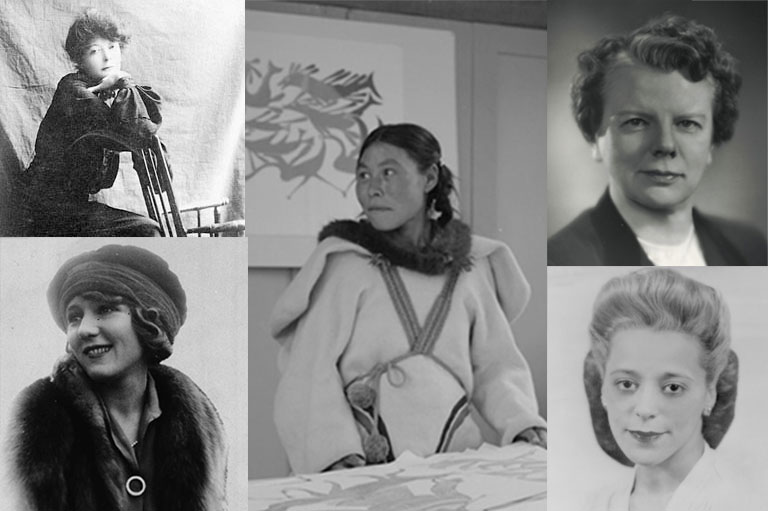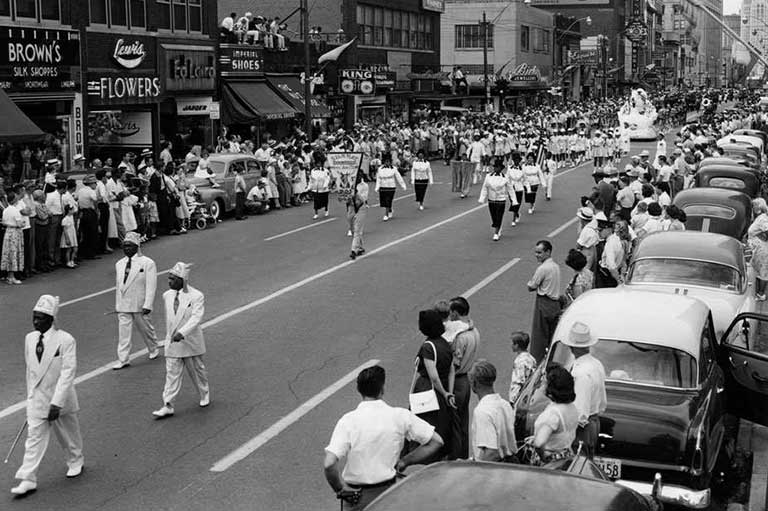Shadows of Manitoba’s Past
Grade Levels: 7/8, 9/10, 11/12
Subject Area: Social Studies, History, Geography, ELA
Lesson Overview
Student will research significant figures in Manitoba's (or another Province / Territory) history and the impact these figures had/have on their lives today. The class will pick a historical figure between 1700 - 1950, research their lives and write about and from the perspective of their chosen figure. Students will then create a poster about their historical figure and present their findings to other classmates, or the larger community.
Time Required
6 – 10 classes
Historical Thinking Concept(s)
This lesson plan uses the following historical thinking concepts: establish historical significance, use primary source evidence, identify continuity and change, analyze cause and consequence, and take historical perspectives.
Learning Outcomes
Student will:
- Participate in activities that will allow them to understand the six historical thinking concepts.
- Research and learn about their Historical Figure using an number of primary and secondary sources.
- Gather, summarize and interpret their research.
- Create a poster that represents their historical figure including visuals and documents that representation their historical figure.
- Present their historical figure posters to the class or larger community.
- Reflect on their learning in a journal exercise.
The Lesson Activities
Activating:
Lesson 1: Historical Figures
- As a class, create a list of significant / important historical figures from their province or territory. Discuss their achievements and impacts.
- Provide student with (Appendix A) or adapt the hand-out to your specific region of Canada. Once complete, have the students choose a one individual to study.
Acquiring:
Lesson 2: Evidence, Cause & Consequence
- Once students have their historical figure, complete Appendix B.
- Ask student to include specific information from their biography sheet, include time, place, etc. and details that they have learned from their research. Students should include 2 – 3 quotes from your research sources to support your biography.
- Have students think about some or all the following topics and questions:
- Questions About Cause:
- Who? Where? When? Why did they or their ancestors come to Canada? Or what Aboriginal group did they originate from?
- What kind of choices did they make in their lives? What influenced those choices?
- What would have been one possession that they owned/had that would have been important to them and why was it important?
- Questions About Cause:
- Questions About Consequence:
- Who did they influence? Or who were they important to?
- How did their choices impact those around them at the time? Today?
- From the research the students have completed, have them write a short biography of their historical figure, including details, causes and consequences of their actions.
- Questions About Historical Context:
- What was happening in Canada at the time? Discuss at least 2 events.
- What was happening in the world at the time? Discuss at least 1 event.
- Explain how these events may have impacted their lives.
- Have students create a time-line of major events in their figure’s life.
- Questions of Curiosity:
- If you could ask 2 questions of your Historical Figure, what would they be?
- How might they answer you?
Applying:
Lesson 3: Letters of Inference & Perspective:
- Explain the following terms:
- Making inferences: is developing evidence-based estimation of the thoughts and feelings of historical actors.
- Taking a historical perspective: is using evidence and historical context to infer the thought and feeling of a historical actor.
- Have students pick a partner in the class.
- Ask students to write a letter to your historical partner that expresses their historical perspective and attempts to make inferences.
- Students should complete Appendix C.
- Review how to write a letter with your students: date and addresses, salutation, clear paragraphs and a closing with a signature.
- Content should cover:
- 3 topics students have chosen to discuss.
- As a guideline have students contemplate the following questions:
- What secret would you tell?
- What advice would you give?
- What anger, admonishment, or scolding would you express?
- What would you talk about regarding your own accomplishments? How would you "manage your image”?
- What dreams, feelings, thoughts, ideas, historical events, details and descriptions would you include?
- Have students include a min. of 3 quotes (typed in Italics) from primary document or secondary sources.
- Include a works cited of the sources used (min. of 3).
Lesson 4: Historical Poster
- Have students create a poster about their historical figure. Aspects of the poster could include:
- Visuals: choose 3 - 5 visuals that will help to explain your historical figure. Write a brief note under each visual to explain it.
- Time line: choose 6 – 10 significant dates that help chart your historical figure’s life
- 1 – 2 points about each date
- Quote: Find one quote stated by or about your historical figure that you feel best represents their perspective/significance
- Summary: write a 250 word summary about the significance of your historical figure. Answer: “How is your figure an important part of Manitoba’s History?”
- Source List: include a list of 3 – 5 sources of your information.
Lesson 5: Presentation
- Have students present their historical figure to the class as a whole.
- Students could also present their historical figures to the larger community.
Materials/Resources
Appendix A - Historical Figures of Manitoba
Appendix B - Historical Figures Bio Sheet
Appendix C - “Getting To Know You”
Themes associated with this article
Advertisement




